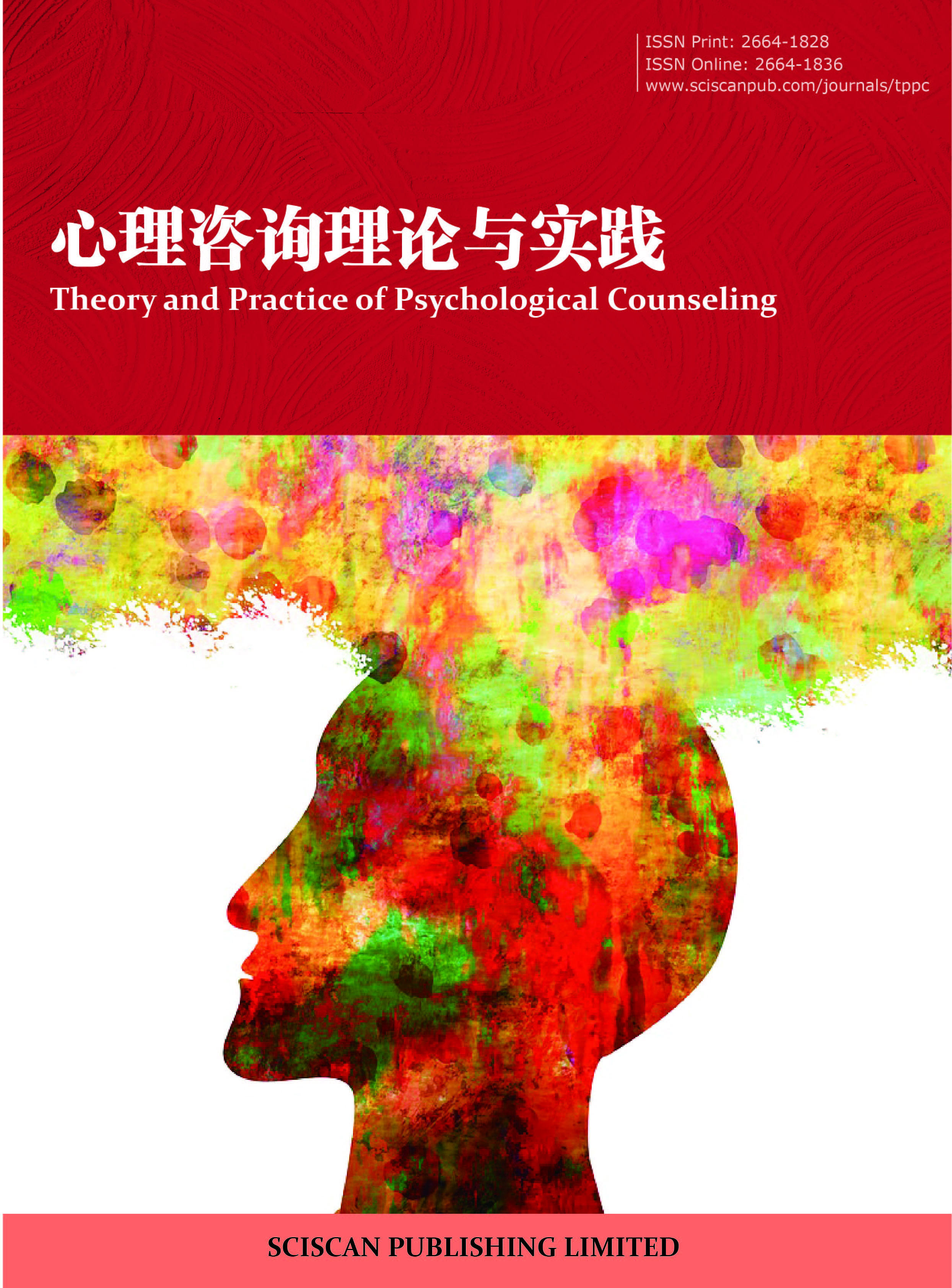Theory and Practice of Psychological Counseling
ISSN Print: 2664-1828
ISSN Online: 2664-1836
Contact Editorial Office
Subscribe to the latest published information from SCISCAN
壮族留守儿童抑郁症状与情绪调节及其他影响因素的研究
Study on Depressive Symptoms, Emotion Regulation and other Influencing Factors of Left-behind Children in Zhuang Nationality
- Authors: 胡泓¹ 陈凤兰² 张盛洁³ 韦乔悦¹ 尹雯雯¹ 吴俊端¹'⁴
-
Information:
1.广西医科大学公共卫生学院医学心理学教研室,南宁; 2.广西医科大学附属武鸣医院,南宁; 3.广西医科大学附属肿瘤医院,南宁; 4.广西卫生职业技术学院,南宁
- Keywords: 壮族;情绪调节;抑郁
- Zhuang nationality; Emotion regulation; Depression
- Abstract: 目的:探讨壮族留守儿童情绪调节与抑郁症状相关性及其影响因素。方法:采取方便整群抽样,在广西崇左市按城乡分布抽样。选取三个中学(一所高中,两所初中),以班级为单位,留守壮族学生作为被试为研究对象,采用人口学资料调查表、9项患者健康问卷(patient health questionnaire-9 items,PHQ-9)、情绪调节量表(emotional regulation questionnaire,ERQ)对其进行调查。结果:壮族留守儿童抑郁症状检出率是25.9%。表达抑制与抑郁症状呈显著正相关(p<0.05)。二元 logistic 回归分析表明,学习成绩优秀(OR:0.334,95% CI:0.130~0.863)、学习成绩良好(OR:0.568,95% CI:0.370~0.873)是壮族留守儿童抑郁症状的保护因素。女童(OR:1.539,95% CI:1.107~2.141)、不住校(OR:1.928,95% CI:1.150~3.233)、学习压力非常大(OR:4.241,95% CI:1.677~10.721)、表达抑制(OR:1.077, 95% CI:1.046~1.109)是壮族留守儿童抑郁症状的危险因素。结论:女童、不住校、学习成绩较差、学习压力较大、表达抑制得分高的留守儿童检出抑郁症状的可能性更高。
- Objective: To explore the correlation between emotional regulation and depressive symptoms in Zhuang left-behind children and its influencing factors. Methods: Convenient cluster sampling was carried out in Chongzuo city, Guangxi. Three middle schools (one high school and two junior high schools) were selected, with classes as units and left-behind Zhuang students as subjects. Demo graphic data, learning and exercise Questionnaire, 9 Patient Health questionnaires (PHQ-9), Emotional Regulation Questionnaire, ERQ to investigate it. Results: The detection rate of depressive symptoms in Zhuang left-behind children was 25.9%. Inhibition of expression was positively correlated with depressive symptoms. Binary logistic analysis showed that there was a significant positive correlation between expression inhibition and depressive symptoms (p<0.05). Girls (OR: 1.539, 95 % CI: 1.107-2.141), resident (OR: 1.928, 95 % CI: 1.150-3.233), excellent academic performance (OR: 0.334, 95 %CI: 0.130-0.863), good academic performance (OR: 0.568, 95% CI: 0.370-0.873), very high learning pressure (OR: 4.241, 95 %CI: 1.677-10.721), inhibition of expression (OR: 1.077, 95% CI: 1.046~1.109) were the influencing factors of depressive symptoms among Zhuang left-behind children. Conclusion: Inhibition of expression is positively correlated with depressive symptoms. The left-behind children who are girls, do not live in school, have poor academic performance, have great learning pressure and have high expression inhibition score are more likely to have depressive symptoms.
- DOI: https://doi.org/10.35534/tppc.0404022
- Cite: 胡泓,陈凤兰,张盛洁,等.壮族留守儿童抑郁症状与情绪调节及其他影响因素的研究[J].心理咨询理论与实践,2022,4(4):164-170.














